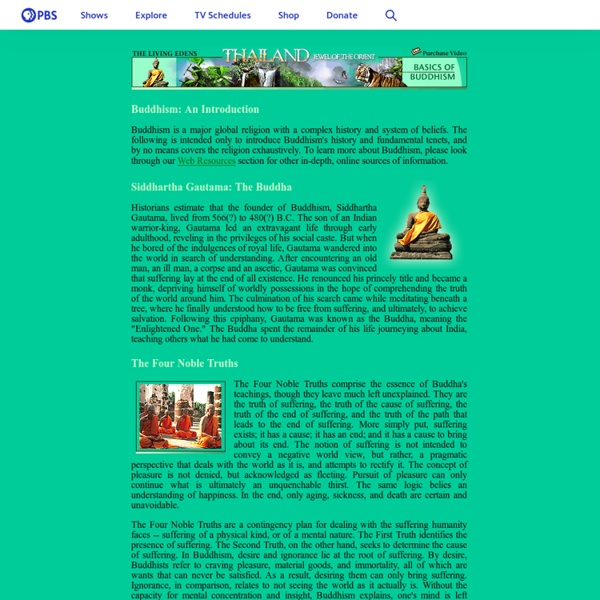What Is a Worldview? by James Sire
[Editor's Note: The following is adapted from the introduction of James Sire's book The Universe Next Door, Fifth Edition. Used by permission of InterVarsity Press PO Box 1400 Downers Grove, IL 60515. Few people have anything approaching an articulate philosophy—at least as epitomized by the great philosophers.
What is 'New Age' Religion, and Why Can't Christians Get on Board? -Spiritual Living, Christian Faith
If you haven't run into it before, it would be hard to avoid it now. Oprah's rolling out the red carpet for the New Age: a weekly online class with New York Times bestselling guru Eckhart Tolle and a daily broadcast with Marianne Williamson, whose Course in Miracles was beckoning seekers thirty years ago when I was tripping through the wonderland of discovering my own divinity and wielding the powers of the universe to create my own reality. Ah, but I didn’t know Jesus back then – that is, I didn't know him as the Son of God. I knew him only through my guru, who taught that Jesus was a great spiritual master and who blended quotes from the New Testament with quotes from the Bhagavad-Gita to produce a spiritual foundation for people like me – too hip, too cool, too sophisticated to tie themselves to the narrow-minded thinking of Christianity. Why can't we all just get along? There are questions we don't have the answers to.
The New Age Movement- What Is It?
This article first appeared in the Summer 1985 issue of Forward, currently the Christian Research Journal. The full PDF can be viewed by clicking here. For further information or to subscribe to the Christian Research Journal go to: What is the New Age movement?
Our Beliefs » salvos.org.au/
Our Beliefs The Salvation Army has 11 faith-based statements called doctrines that summarise its religious beliefs. The Salvation Army’s statements place it in harmony with other mainstream denominations of Protestant Christianity.
What Do Quakers Believe? What Are Their Beliefs on Jesus?
Thank you for your interest in Patheos newsletters! Please enter your email address below and click the "Subscribe" button. Thank you for your subscription. You can visit your Preference Center to complete your profile and see what else we have to offer.
Amish
The Amish are members of an Anabaptist Christian denomination who are especially known for their separation from society, for living in isolated Amish communities, for the rejection of most modern technology, and for their distinctly conservative dress. Their way of life differentiates them from other Christian denominations. In the United States, Amish communities are mostly found in Pennsylvania and the Midwest, namely Ohio and Indiana. It is common for members of this denomination to live rurally where there is land to farm. It is also common for Amish to live near other Amish, which enables them to support each other's lifestyle as well as establish a local congregation of people with similar beliefs and convictions. Recently the Amish people have become known to many through reality television programs.
Amish Beliefs, Practices, and Customs
By Jack Zavada Updated December 10, 2014. Amish beliefs hold much in common with the Mennonites, from whom they originated.
Definition of terms: cults, sects, denominations
Definitions of terms: Quotations: "...if you believe in it, it is a religion or perhaps 'the' religion; and if you do not care one way or another about it, it is a sect; but if you fear and hate it, it is a cult." Leo Pfeffer. A humorous quotation, but one that is uncomfortably close to reality. "Cults are claimed to be deceitful.
Existentialism - By Branch / Doctrine
Introduction | Main Beliefs | History of Existentialism | Criticisms of Existentialism Existentialism is a philosophy that emphasizes individual existence, freedom and choice. It is the view that humans define their own meaning in life, and try to make rational decisions despite existing in an irrational universe.
Scientology Beliefs & Practices: What is Scientology?
Developed by L. Ron Hubbard, Scientology is a religion that offers a precise path leading to a complete and certain understanding of one’s true spiritual nature and one’s relationship to self, family, groups, Mankind, all life forms, the material universe, the spiritual universe and the Supreme Being. Scientology addresses the spirit—not the body or mind—and believes that Man is far more than a product of his environment, or his genes. Scientology comprises a body of knowledge which extends from certain fundamental truths.
The Story of the Jonestown Massacre
By Jennifer Rosenberg Updated April 07, 2015. What Was the Jonestown Massacre? The Jonestown Massacre, which had a death toll of 918 people, was the most deadly single non-natural disaster in U.S. history until September 11, 2001. The Jonestown Massacre also remains the only time in history in which a U.S. congressman was killed in the line of duty. Date: November 18, 1978
The Branch Davidians
On February 28, 1993 at approximately 9:30 a.m., 100 lawmen from the Alcohol, Tobacco, and Firearms division of the United States Treasury Department descended on a religious compound owned and operated by the Branch Davidian cult 10 miles east of Waco, Texas. Their objective was to serve a search warrant for illegal firearms and explosives, and arrest the cult’s leader, David Koresh, on weapons charges. Unfortunately, Koresh and his group had been tipped off and were waiting as authorities approached.
BRANCH DAVIDIANS (STUDENTS OF THE SEVEN SEALS)
He founded the Mt. Carmel Center near Waco TX with 11 followers in 1935. He called the group "The Shepherd's Rod" after his book title.



